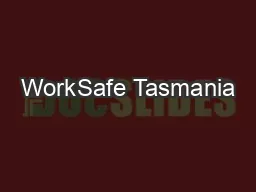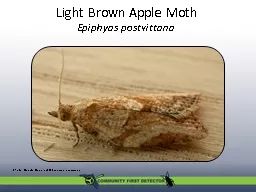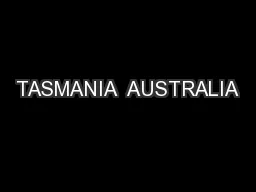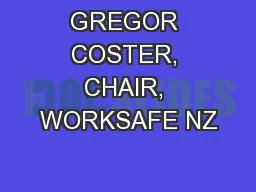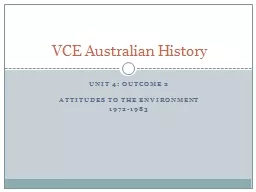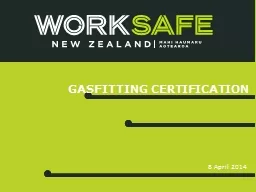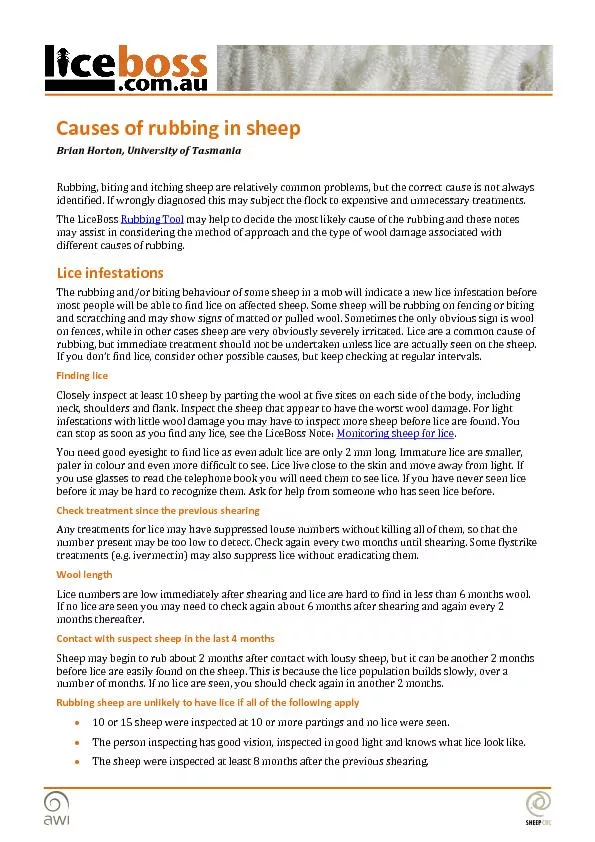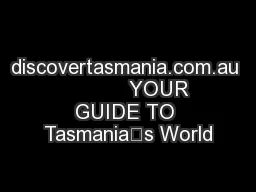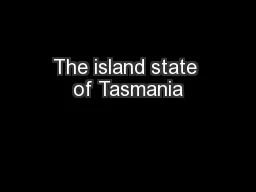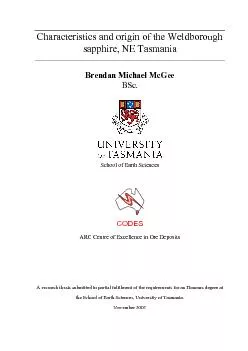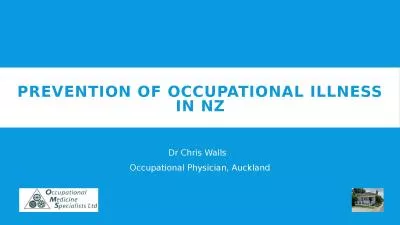PPT-WorkSafe Tasmania
Author : celsa-spraggs | Published Date : 2016-07-25
Scheme Update Brad Parker Director Compensation and Communication WorkCover Tasmania Board This presentation has been prepared for the Actuaries Institute 2013
Presentation Embed Code
Download Presentation
Download Presentation The PPT/PDF document "WorkSafe Tasmania" is the property of its rightful owner. Permission is granted to download and print the materials on this website for personal, non-commercial use only, and to display it on your personal computer provided you do not modify the materials and that you retain all copyright notices contained in the materials. By downloading content from our website, you accept the terms of this agreement.
WorkSafe Tasmania: Transcript
Download Rules Of Document
"WorkSafe Tasmania"The content belongs to its owner. You may download and print it for personal use, without modification, and keep all copyright notices. By downloading, you agree to these terms.
Related Documents

